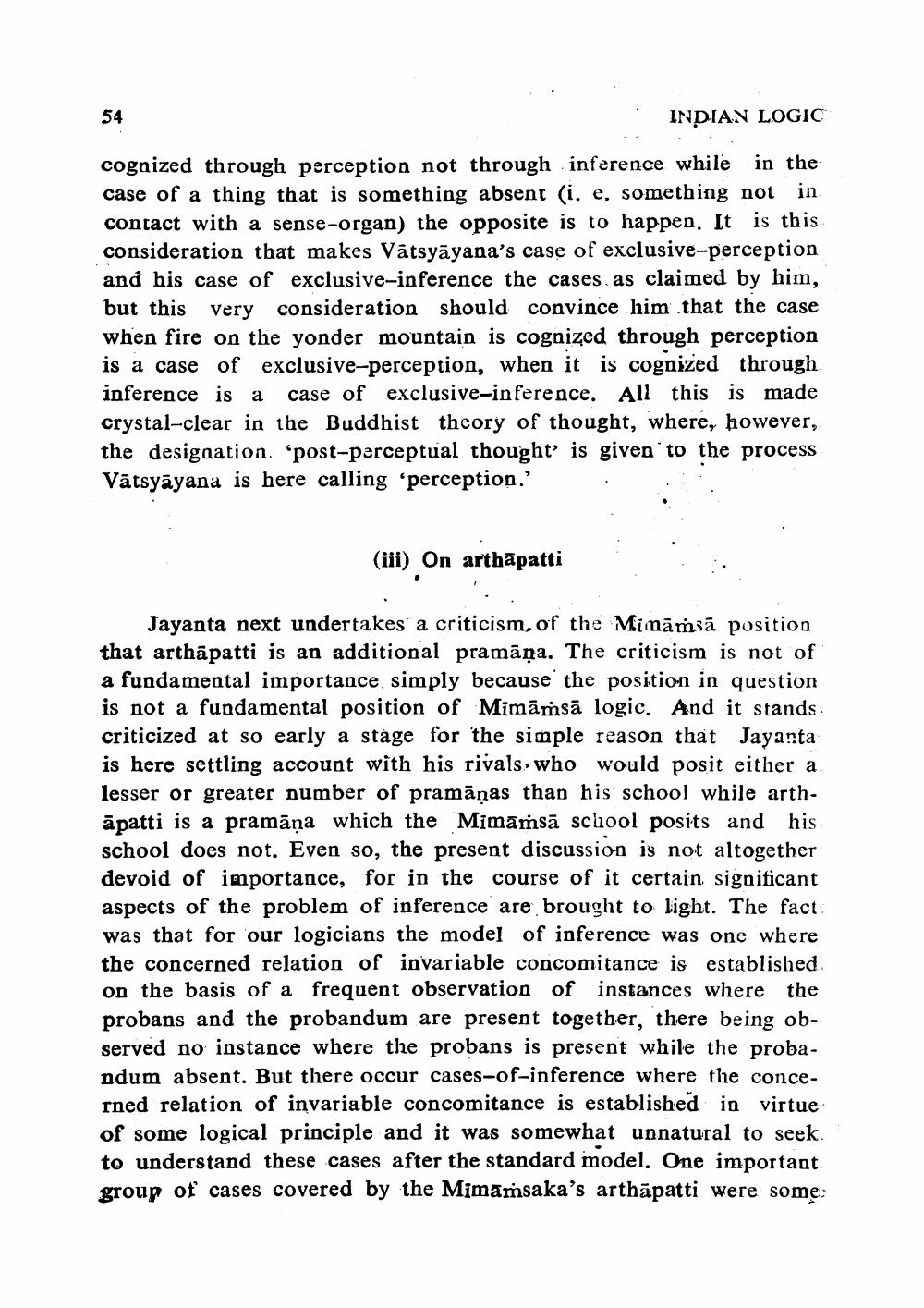________________
54
INDIAN LOGIC
cognized through perception not through inference while in the case of a thing that is something absent (i. e. something not in contact with a sense-organ) the opposite is to happen. It is this consideration that makes Vätsyāyana's case of exclusive-perception and his case of exclusive-inference the cases as claimed by him, but this very consideration should convince him that the case when fire on the yonder mountain is cognized through perception is a case of exclusive-perception, when it is cognized through inference is a case of exclusive-inference. All this is made crystal-clear in the Buddhist theory of thought, where, however, the desigaation. 'post-perceptual thought is given to the process Vātsyāyana is here calling 'perception.'
arthāpatti
Jayanta next undertakes a criticism, of the Mināmsā position that arthāpatti is an additional pramāņa. The criticism is not of a fundamental importance simply because the position in question is not a fundamental position of Mimāṁsā logic. And it stands. criticized at so early a stage for the simple reason that Jayanta is here settling account with his rivals who would posit either a lesser or greater number of pramānas than his school while arthāpatti is a pramāna which the Mimāṁsā school posits and his
chool does not. Even so, the present discussion is not altogether devoid of importance, for in the course of it certain significant aspects of the problem of inference are brought to light. The fact was that for our logicians the model of inference was one where the concerned relation of invariable concomitance is established on the basis of a frequent observation of instances where the probans and the probandum are present together, there being observed no instance where the probans is present while the probandum absent. But there occur cases-of-inference where the concerned relation of invariable concomitance is established in virtue of some logical principle and it was somewhat unnatural to seek. to understand these cases after the standard model. One imp group of cases covered by the Mimamsaka's arthāpatti were some




